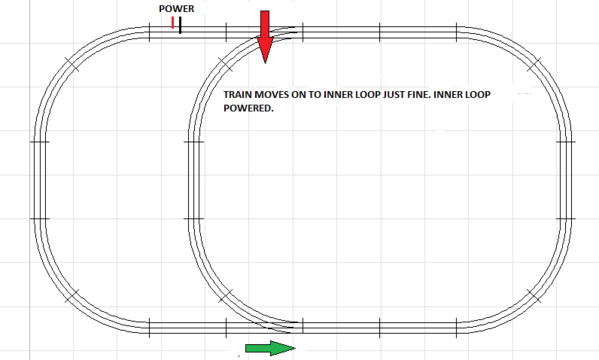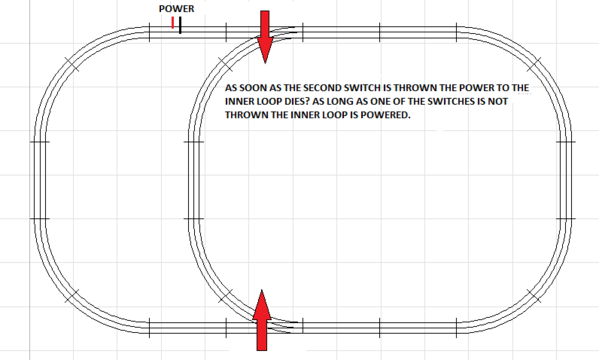Hey guys, I set up a simple oval with two manual switches as shown in the pics.
When both switches point out, the train runs the outer oval fine. When any ONE switch points in, the train enters the inner loop and proceeds. If the other switch is set to point in then the inner loop dies...? I have a power lockon as shown. Do you suppose I need another power tap on the inner track or I am all wrong on how a basic manual switch works?
Thank you.
Ted










